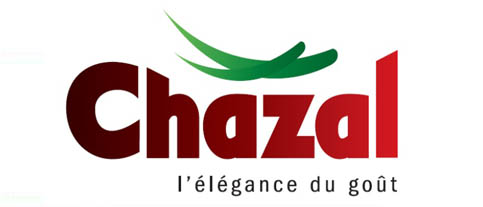Project Overview
Scientists
Technical AspectsFat highly contributes in the texture, aroma, and mouth-feel perception of food products. It constitutes a solvent and a vector for aroma compounds and controls their retention and release. Salt and sugar act on the ratio of aroma compounds present in the gas phase. Salt and sugar act on the ratio of aroma compounds present in the gas phase (Voilley et al., 2006).
Concerning flavour release and perception, fat interacts with sweetness and saltiness. For example, fat has been found to mask saltiness in many food systems. For some concentration levels, it also acts on sodium release in mouth. Moreover, today, fat perception is hypothesized to be a single stimulus, with its specific sensory receptors (Besnard, Gaillard, Passilly-Degrace, Martin & Chevrot, 2010).
Consequently, we can also think that perceptive interactions can exist between fat perception and taste or aroma perception, increasing or decreasing these ones. Concerning sugar/salt, sweet perception generally masks saltiness intensity. Fat, salt and sugar participate to the food structure and consequently to its mechanical properties. Current reduction strategies are mainly based on substituting these ingredients:
Salt
Several salt substitutes have been developed but they present several drawbacks. The most used is the potassium chloride for a partial or total substitution of sodium chloride. However, when the ration is over 50% KCl, bitterness appears with off-flavour such as metallic note and KCl presents health risk for populations with diabetes, renal or cardiac pathologies. Additional salts or organic compounds were also used to mask KCl off-flavours. In this way, co-crystallisation of KCl and Ribotide (commercial mixture of nucleotides) was proposed. Yeast and marine algae extracts, lactates, nucleotides were used as saltiness enhancers. Monosodium glutamate, responsible for umami taste, is also a saltiness enhancer but it contains sodium ions and is also suspected to be responsible for neurotoxicity if consumed in excess. Another potential strategy is on optimizing the form of salt (areamorphology of the crystal) which can be dendritic, granular or fleecy in order to increase the salt bioavailability in mouth by a quicker dissolution. Also, salt can be used for its antimicrobial properties and play a key role in the shelf life of food products. Its reduction or substitution can directly impact on microbial quality and indirectly on other quality characteristics (nutritional, sensorial, organoleptic qualities).
Fat
Fat substitution is possible with synthetic substances with physico-chemical characteristics close to natural triglycerides but with a lower energetic power and often a lower digestibility. They are compatible with natural fat and can replace them at least partially on a technological viewpoint. Some of them have a high thermal stability and can be used for frying food process such as sorbitol, sugar polyesters and polyglycerol. Generally, triglycerides with shorter chain fatty acids have a lower energetic power than natural triglycerides. However, some of these fat substitutes can modify the bioavailability of macro- and micronutrients, be responsible for digestive troubles and lower vitamins absorption. Another way to decrease fat content in food is to replace a part of fat in lipid /water emulsion by small water droplets. This leads to a multiple water/oil/water emulsion but their stability is lower and needs the addition of emulsifiers, thickeners and stabilisers to get product formulations with a lower fat content and acceptable sensory properties. The nature of the fat is also important, as the proportion of saturated fats in our diet should be reduced to less that 10% of our energy intake. This can be straightforward with some foods and processes through replacing heavily saturated animal fats with liquid vegetable based oils. For meat products, some producers are adding polyunsaturated fats and omega 3 and 6 to animal feed as they are then transferred to the animal tissue, to reduce saturated fat levels. However, from a technological point of view, some foods (eg bread, bakery and dairy products) rely on solid (saturated) fats to provide specific structural and textural properties which are not possible using liquid oils which are high in unsaturated fatty acids.
Sugar
Simple sugars such as fructose or sucrose are responsible for the unanimously appreciated sweet taste. Their role in food texture is important as they provide body and volume. They are important major constituent in cake making and important binders for dough. Their presence improves the manipulation of the dough with industrial machines, convey sweetness and decreases the water activity of the final product, improving the shelf-life. In order to reduce caloric intake, they can be replaced by intensive sweeteners (aspartame, sucralose, stevia, etc ...), this way keeping the same sweetness profile without the added calories. However because of their strong nature, small volumes are required to achieve the same sweetness level, resulting in losses of volume (as bulking agents) and modifications in texture, furthermore depending on the country some are not authorized to be added to specific foods. Alternatively, a part of simple sugars can be replaced by soluble fibres or other carbohydrates which can add volume to the food such as polyols and fructo-oligosaccharides. However, the use of polyols is limited due to their postingestive effects as laxatives, and therefore it is important to combine them with other alternatives to achieve the target taste and texture.
Read peer-reviewed publications by TeRiFiQ participants
Policy Makers
Benchmark for salt reduction:Products should be reduced by 4% per year in order to allow consumers to adapt to slightly decreasing salty taste and in order to ensure continuous progress. Salt reformulation theory is based on the fact that taste can adapt to gradual reductions if those reductions are achieved across the board.
Sugars & Carbohydrates:
For sugars there is good evidence that frequent consumption of foods high in sugars increases the risk of tooth decay. Data also show links between high intakes of sugars in form of sugar sweetened beverages and weight gain...
Fats:
…There is good evidence that higher intakes of saturated fats and trans fats lead to increased blood cholesterol levels which may contribute to development of heart disease. Limiting the intake of saturated and trans fats, with replacement by mono- and poly-unsaturated fatty acids, should be considered by policy makers when making nutrient recommendations and developing food-based dietary guidelines at national level.
Jobs
Jobs
Consumers
Eating habits .....Most developed countries are confronted with a rising rate of obesity mainly due to bad eating habits, in particular, of non well-balanced diet containing fat and low-size sugars. Moreover, this pathology is difficult to reverse.
In many European countries, an excessive consumption of salt is also a problem as it is at the origin of cardiovascular risks and hypertension (EFSA, 2010c). Previous studies across countries with high incidences of strokes and cardiovascular disease have estimated that around 850,000 lives could be saved every year if people reduced their salt intake to 5g a day. Currently in Europe people's daily salt intake is estimated to be far higher almost 10g a day (WHO, 2007).
Globally, pathologies including diabetes, cancers and osteoporosis have been linked to low quality nutrition, and these pathologies are very costly for society not to mention the impact on the quality of life of citizens concerned. In response to this situation the food industry is making an effort to integrate these nutritional criteria in the formulation of food products. Consequently, the new designed products should aim to higher increase levels of nutritional quality by rationalising the use of the targeted ingredients. However, it should be taken into account that some nutrients which are included in the food target components are recognized to have an important nutritional action.
For example, sea salt is an important source of iodide and fluoride in the human diet (Szybinski et al., 2010), milk fat is an important vector for vitamins A and D. Moreover, some milk fat components such as phospholipids of the fat globule membrane and conjugated linoleic acids are recognized for their anticarcinogenic effect (Dewettinck, Rombaut, Thienpont, Messens & van Camp, 2008; Spitsberg, 2005). Phospholipids have also a preservative effect at the hepatic and cardiovascular levels (Wat et al., 2009). Saturated fats are a precursor for cholesterol. The level of their intake is positively associated with serum cholesterol level. Major sources of saturated fat are animal foodbased products such as dairy and meat products. Recently, dietary fat of animal origin was associated with increased pancreatic cancer risk. Unsaturated fats are predominantly found in plant products but also in fish with DHA (Docosahexenoic acid, Omega 3 series) which is a major fatty acid in phospholipids and plays a role in combating heart disease, Alzheimer's disease, depression...
In a general manner, the replacement of food high in saturated fatty acids with polyunsaturated or monounsaturated fat rich foods reduces the total cholesterol and low density lipoprotein (LDL) cholesterol (EFSA, 2010b). Thus, the reformulation of foods should be reasoned.
Concerning sugars consumption, the frequent consumption of food high in sugar increases the risk of tooth decay. Links between high intakes of sugar in form of sugar sweetened beverages or and weight gain are evidenced. Concerning solid foods, compared to the high intake of starch, to weight gain appeared inconsistent. Moreover, it was suspected that addiction plays a role in eating disorder and obesity but, up to date, no human study supports that hypothesis (Benton, 2010; EFSA, 2010a).
Partners in the News
 The fate of food in the digestive tract
The fate of food in the digestive tract
The digestive tract is an extraordinary tool for transforming matter. As it
is highly compact and adaptable, it ensures the transformation of ingested foods
into nutrients that can be absorbed by our digestive mucosa through mechanical,
chemical, biochemical and biological processes. INRA currently possesses a
combination of knowledge and tools that make it possible to integrate all of
these events to create an in silico model of the fate of food in the digestive
tract. The aim is to improve our knowledge about the digestive process: What is the role of the "structure" of a food at different scales, on the availability kinetics of "molecules of interest" during digestion, and what are their effects on humans?
>>> READ MORE

 Michel BERNING from CHAZAL (SME partner of TeRiFiQ) interviewed on TeRiFiQ in the frame of F2C (French Food Cluster)
Michel BERNING from CHAZAL (SME partner of TeRiFiQ) interviewed on TeRiFiQ in the frame of F2C (French Food Cluster)
Watch the video (in French).
More Articles...
News
TeRiFiQ Final Conference, 27th October 2015 at Milan EXPO, Italy. Presentations are online
Project results in a nutshell: TeRiFiQ Infosheets, available in English and many other languages
This project has received funding from the European Union’s Seventh Framework Programme
for research, technological development and demonstration
for research, technological development and demonstration


 Top
Top